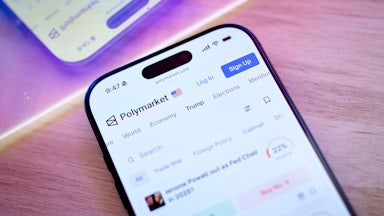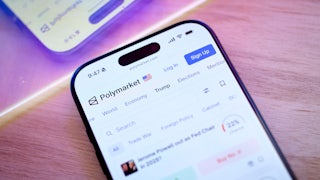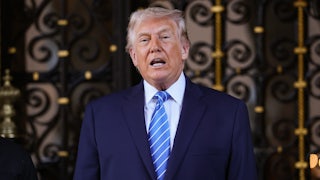I have hesitated to write about Elon Musk’s takeover of Twitter before now for a few reasons. There were plenty of other important stories out there: the midterm elections, the Supreme Court’s current term, and the ongoing criminal investigations into former President Donald Trump. Writing about one billionaire’s strange quest to buy, and then not buy, and then be compelled to buy a social media website felt trivial.
But Twitter is still an important website and social network, and Musk appears on course to destroying it. At an all-hands meeting on Thursday, he floated the possibility that the company could end up declaring bankruptcy if it did not change course. Musk reportedly said that Twitter’s cash flow was several billion dollars in the red and that he had recently sold a multibillion dollar portion of his own Tesla shares to keep it operating.
The Verge also reported on Thursday that Twitter’s chief privacy officer, chief information security officer, and chief compliance officer all resigned this week, and that the company’s new legal department is also now reportedly asking its engineers to “self-certify” compliance with a Federal Trade Commission consent decree on user privacy. Failure to comply with those certifications, even inadvertently, could open the company up to “billions” of dollars in fines, The Verge quoted a former Twitter outside counsel as saying.
All of this is on top of the other havoc that Musk has wrought since taking over Twitter late last month: laying off more than half of the staff and then begging some key personnel who’d been fired to come back, immolating the company’s relationships with existing advertisers by issuing vague threats of retaliation, alienating half of the country by endorsing Republicans in the midterm elections, and abolishing its verified user program as part of a grievance-driven cash grab. Musk’s ownership has led some users to consider whether they should abandon Twitter. At this rate, however, it’s worth wondering how much longer Twitter will exist.
There is a tendency in some circles to view Twitter as frivolous. This was always strange because Twitter also happens to be one of the most important websites on Earth. If you follow the right people, it is arguably the best news source in the English-speaking world, albeit one that is built on the backs of news outlets and their journalists. It is a place where people share jokes and comment on live sports and interact with their friends. It is also a place where former President Donald Trump organized a coup attempt two years ago and where ordinary users have organized protests, uprisings, and revolutions over the last decade.
Given that importance, it’s also been strange that it never really made money. I don’t have any special knowledge of Twitter’s current balance sheet. Since it is no longer a publicly traded company after Musk’s purchase of it, nobody else outside of Twitter does either. But there are some fundamental forces that any website must obey. The biggest one is that it requires money. Its owners need to pay for server space to host the website’s data at a bare minimum. If the website’s owner pays workers to help run it, they also need to pay for those workers’ salaries and health insurance. If the website has investors, it must provide some sort of return.
Those sites, such as Twitter, which don’t sell products or otherwise have other revenue streams, have two options. They can charge users for access, either directly with subscriptions or indirectly by taking a cut of any real-world transactions that happen on the website. Or they can monetize the users’ attention by selling digital space and personal data to advertisers. Some internet companies do both.
Twitter is no different. For most of its existence, it relied on ad sales and investor capital to keep the lights on. In its second quarter of 2022, the last one that the company publicly reported before Musk took it private, Twitter brought in just over $1 billion in advertising revenue and about $101 million from its Twitter Blue subscription service. I said “keep the lights on” instead of “make a profit” because Twitter was only occasionally profitable over the last decade or so. That quarter, it also had $1.52 billion in operating costs and expenses, leading to a $344 million operating loss. Twitter wasn’t the only internet company that had a rough time this year, of course, but it also just came off a decade of having very few good quarters.
I explain all of this not because I think you, dear reader, don’t understand basic economics, but because it’s an open question whether Elon Musk does at the moment. He paid roughly $44 billion for a company that he is now demolishing at every turn. One Twitter lawyer, quoted by The Verge in an internal company post, claimed that Musk “has shown that he cares only about recouping the losses he’s incurring as a result of failing to get out of his binding obligation to buy Twitter.” I am skeptical that this is true! If it were, Musk would have probably not spent the last two weeks wrecking Twitter’s only two feasible revenue streams.
Musk’s first big idea to make Twitter more profitable was to charge users for having a blue check mark next to their name through Twitter Blue. For most of Twitter’s existence, these symbols were attached to users whose identity had been confirmed in some way by the company, generally people with an elevated risk of impersonation. Donald Trump, LeBron James, the British royal family, and Elon Musk himself all had the blue check mark. So did more than 400,000 others as of last month—government accounts and politicians, CEOs and activists, celebrities and athletes, news outlets and journalists, and so on.
Making the verified user label more accessible isn’t necessarily a bad thing. Twitter’s verification process was opaque at best in the pre-Musk era. For one thing, there wasn’t an open process for most people to obtain one. (I got mine in either 2014 or 2015 when The Atlantic, my employer at the time, got Twitter to hand them out to reporters there en masse.) Over time, some conservative Twitter users began to derisively refer to those who had them as “blue checks” and pretended that it reflected some sort of elite status. Being verified could coincide with being prominent in some way but often didn’t. And while it probably brought some intangible benefits to its bearer, a blue check mark often proved less important to gathering followers than simply having good tweets.
Musk initially proposed a $20 monthly fee to obtain a blue check mark, but later dropped it to $8 in apparent response to personal backlash from author Stephen King. You can sort of understand his logic here. Verified users tend to either be frequent users of the site and/or can easily afford to pay for it. It’s an obvious choice for a potential revenue stream. I would personally have no problem paying to maintain mine in theory because I’ve used Twitter for more than 13 years and it is, for better or worse, an important part of my life.
Unfortunately for Twitter, Musk’s change appears to be driven more by personal grievances towards verified users (and journalists with blue check marks in particular) than actual business considerations. “Twitter’s current lords & peasants system for who has or doesn’t have a blue checkmark is bullshit,” he claimed when announcing the program last month. “Power to the people! Blue for $8/month.” There is something deeply cynical about echoing right-wing gripes about verified users in anti-feudalism terms, then charging people rent to prove their digital identity as a solution. It also makes no sense to alienate the natural market for this service: the people who already have it.
Phrasing and marketing is the least of the problems here however. The blue check mark actually served an important verification purpose. But those who obtain one by subscribing to Twitter Blue aren’t actually required to prove their identity. In a stroke, Musk has erased any trust or confidence that whoever is posting something on Twitter is actually that person. He has even started referring to verified users as “payment-verified users,” meaning that the blue check mark only means someone gave Twitter $8. When Twitter employees created and issued an “official” tag to ameliorate the issue for government accounts, Musk publicly nuked it. That, in turn, lead to a medium-sized problem—and a big one.
First, why would anyone actually subscribe to Twitter Blue? It’s one thing to pay $8 each month for some sort of digital-identity protection racket if it actually provides protection. But it’s now just a cosmetic feature for a Twitter user’s profile. Owning the libs or the journalists or whatever by having one might be fun at first for some users. It’s probably not going to make Twitter profitable in the short term and certainly won’t help in the long term, after the novelty wears off.
To that end, Musk also suggested that Twitter Blue subscribers will get certain other perks, including “priority in replies, mentions & search, which is essential to defeat spam/scam.” He later elaborated that “the net effect over time will be that the verified users will pretty much always be at the top of comments and search and you won’t really see—you’ll have to scroll far to see unverified users, which will be the bots and the trolls.” In other words, while claiming to overturn a fictitious “lords and peasants system,” Musk plans to create an actual one where users will have to pay to interact with each other in any meaningful way.
That shift risks destroying the leveling effect between users that made Twitter so attractive in the first place. One of Twitter’s great original virtues was that you could interact with well-known people and they might actually reply. It’s lost some of that potency over time as it grew and as harassment became a more pronounced problem, but it’s still a major reason why people initially gravitated towards the platform. Some of Musk’s other ideas in the works—like allowing people to pay to forcibly send a private message to someone who doesn’t otherwise want it—appear actively hostile to the “global town square” philosophy in particular and to the user experience in general.
That’s the midsized problem. The bigger one is the advertiser exodus. Twitter was already seeing a drop in ad revenue before Musk took over, as part of the broader economic downturn. Things have apparently only gotten worse. Many major companies are pausing ad spending on the platform until they get a better sense of Musk’s changes. Some have also pulled out purely in self-interest—why should Ford or General Motors give money to a website personally owned by their competitor? In response, Musk has alternated between promising to uphold existing moderation standards that forbid racist and hateful content and threatening to “name and shame” companies in retaliation for abandoning him.
Assume for one moment that Musk was somehow able to restore advertiser goodwill. Thanks to his new de-verification program, “verified” users are now free to impersonate companies and post whatever they like under that company’s name for a short period of time until they get suspended. (This has already happened.) It is only a matter of time before someone realizes that they can short a company’s stock, impersonate a journalist, tweet that the Justice Department indicted that company’s CEO for securities fraud, and reap the rewards of any price drop before people catch on. Why would any company pay for promoted tweets on a site where users can’t automatically trust that they are authentic?
In sum, Musk is facing a real and precipitous loss in the already insufficient advertising dollars which accounted for most of Twitter’s revenue throughout its history. He is throwing his weight behind a hastily designed subscription service that currently provides few tangible benefits for users, appears unlikely to become a stable revenue stream in the near or long term, and undermines Twitter’s basic utility for everyone. And most of his other potential ideas so far—like turning the platform into a payments processor, to name one example—are outlandish and unlikely at best.
Wait a minute, you might note here, why does it matter if Twitter makes money? It certainly didn’t for most of the last decade. That’s true, but Twitter’s previous investors thought that it would eventually become profitable and were willing to keep it afloat until it did. Now that it’s gone private, it essentially has just one investor: Elon Musk. (Some previous investors, including a Saudi prince and founder Jack Dorsey, still retain small ownership stakes.) So the question becomes how long Musk is willing to keep Twitter afloat. He noted in one recent tweet that the company was losing $4 million each day.
Every dollar that Twitter doesn’t make from ads or subscriptions must come from somewhere to pay its operating expenses, and that somewhere is probably Musk himself. On top of that, Musk also overspent to buy Twitter in the first place and the company is now saddled with roughly $13 billion in debt, according to The New York Times, including roughly $1 billion in annual interest payments. Musk, in short, bought an unprofitable company at a high price and is destroying its long-term value to recoup his losses. You don’t have to be Warren Buffett to realize that dynamic is not sustainable, even for the world’s richest man on paper.
This is not to say that Twitter’s ancien régime had everything right or that Musk can’t find actual ways to make Twitter profitable. The meteoric rise of short video platform TikTok, for example, makes Twitter’s decision to buy Vine in 2012 and then shutter it in 2016 after competition from Instagram look like a major missed opportunity. Musk has floated the idea of reviving the app and it’s a strong idea, especially if the Chinese-owned TikTok runs into regulatory problems in the future. A less adversarial version of Twitter Blue that genuinely verifies users’ identities could also be viable, keeping the previous verification system intact while making it attainable in an open and sustainable fashion. But that would require patience and long-term vision—two things that Musk does not seem to have at the moment.
Indeed, another major problem for Twitter is that Musk doesn’t seem to truly care about any of this. When someone referenced a verified tweet that impersonated Nintendo this week, he replied with two laughing-while-crying emojis. He is unambiguous about his hostility towards “legacy verified users” in general, whom he described as “corrupt,” and journalists in particular, some of whom have covered labor issues at Tesla and allegations of sexual harassment against him. This appears to be overwhelming his other senses. One friendly user told him that the new blue check mark system was a “scam nightmare” and pleaded with him to reverse course. In response, Musk simply wrote, “$8.” This does not inspire trust.
It’s possible, of course, that Musk finds a way to make the company profitable, rebuilds confidence among established users and major advertisers alike, and turns Twitter into a “free-speech” utopia that strikes a harmonious balance between excluding hateful users and welcoming different points of view. It’s also possible that he will get bored, turn his attention back to Tesla and SpaceX, sell Twitter’s office space and data archive to some multinational conglomerate that specializes in helping foreign dictators hunt down dissidents, and write off the loss on his next tax return. Maybe he’s in this for the long haul. Maybe he’ll pin this article up in the break room after Twitter’s first full year of profitability. Or maybe he’s still the guy that spent most of this year desperately trying to not buy the dumb bird website in the first place.





